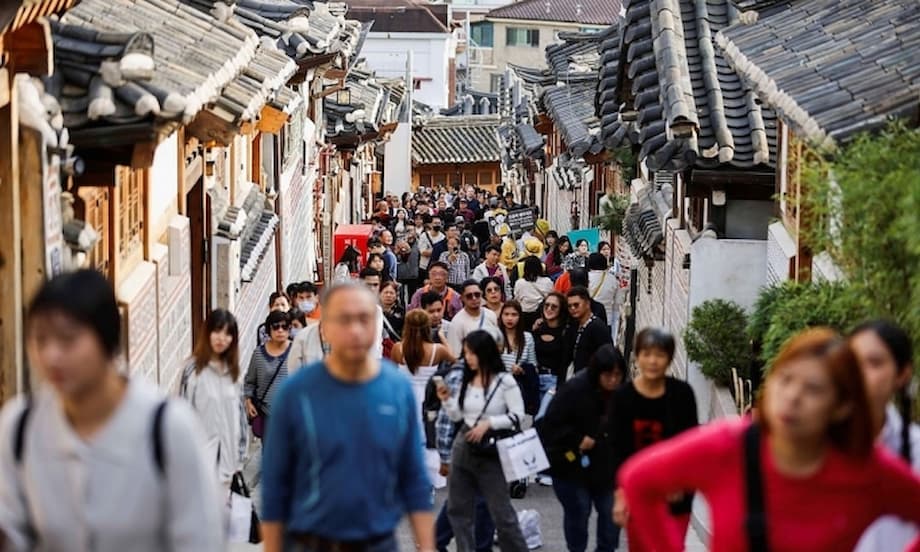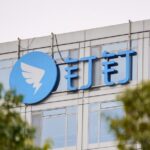A rebound that set the pace worldwide
South Korea closed 2024 as the fastest growing major tourist destination on the planet. An analysis by Telegraph Travel of United Nations World Tourism Organization statistics found the country recorded a year on year jump of 48.82 percent in international arrivals. That surge lifted inbound visitors to roughly 16.3 million for the year, about 94 percent of the record set before the pandemic in 2019. The rebound has been fueled by a potent mix of culture, shopping and easier travel rules for key markets, with Chinese visitors once again leading the return.
- A rebound that set the pace worldwide
- The numbers behind the boom
- What visitors spend and where they go
- The flip side, a widening travel deficit
- Overtourism strains at Bukchon and Jeju
- Policy responses and visa shifts
- K culture, music travel and medical care draw new crowds
- Where growth can spread next
- The 2025 outlook
- Key Points
Behind the headline growth is a story of a tourism revival that has touched neighborhood shops in Seoul and beach resorts in Busan, as well as natural wonders on Jeju Island. The draw of Korean culture, from chart topping acts and hit dramas to food and beauty brands, has turned fan interest into flights. Policy choices mattered too. Seoul moved to temporarily waive visas for Chinese group tours from September 29, 2024 as a reciprocal step, and eased transit entry for Chinese travelers headed to a third country. The result was a sharp uptick in arrivals from its largest source market and a broader recovery across Asia and beyond.
The numbers behind the boom
Official data confirms the rise. According to figures summarized by The Korea Herald, South Korea welcomed about 16.37 million foreign visitors in 2024, a 48.4 percent increase from 2023 and nearly back to the 17.5 million peak in 2019. That reversal from the pandemic low point, when arrivals collapsed to under one million in 2021, explains why global rankings put Korea at the top for growth last year.
China led the return, contributing roughly 4.6 million visitors in 2024. Japan followed with about 3.22 million. Taiwan sent about 1.47 million, and the United States about 1.32 million. These figures align with trends visible earlier in the year. In the first half of 2024, arrivals reached 7.7 million, up 74 percent from the same period in 2023, with Chinese group tours resuming and group visas climbing back toward pre pandemic shares. That early momentum carried into the second half as travel restrictions eased and airline capacity improved.
Travel is also recovering within Northeast Asia at large. Data tracked by regional outlets showed strong cross border flows across China, Japan and South Korea during the year. For Korea, the concentration of source markets remained familiar, with China and Japan ranking first and second, and Taiwan, Hong Kong and the United States rounding out the top five by late autumn.
What visitors spend and where they go
The spending profile of inbound travelers tells its own story. Foreign visitors in 2024 devoted the largest share of their budgets to shopping, accounting for about 37.8 percent of spending, according to figures reported by The Korea Herald. Hotels and other accommodations made up about 33.9 percent. Dining accounted for about 19.2 percent. These habits reflect what tourists say they come for: Korean beauty products and fashion, duty free bargains, and a food scene that ranges from street markets to Michelin starred restaurants.
The recovery has revived districts that fell quiet during the pandemic. Myeong dong, once known for its packed cosmetic stores, has filled again with overseas shoppers. Upscale malls in Gangnam and duty free outlets near Gwanghwamun are drawing visitors from China and Japan who are taking advantage of tax free purchases. Spending remains concentrated in the capital. Seoul captures about two thirds of all foreign visitor outlays, a sign of the city’s enduring pull. Even so, travel patterns are widening. More visitors are adding Busan’s beaches and seafood markets to their itineraries, exploring royal heritage sites and theme parks in Gyeonggi Province, and hiking Hallasan or coastal trails on Jeju.
Tourism is also a heavyweight in the national economy. The World Travel and Tourism Council (WTTC) projected South Korea’s sector would contribute a record 96.2 trillion won in 2024, about 4.3 percent of the economy, and support more than 1.4 million jobs. The group expected international visitor spending to climb back toward 2019 levels at nearly 31.9 trillion won. These estimates highlight the sector’s role in job creation and local business health.
Julia Simpson, President and CEO of WTTC, pointed to government focus as a driver of the rebound and continued growth. She said the momentum shows the payoff from policies that put travel and tourism at the center of economic strategy and raise the country’s profile among global travelers.
“The impressive growth of South Korea’s Travel and Tourism sector underscores the government’s outstanding commitment to prioritising tourism as a key driver of economic development, boosting economic growth and enhancing South Korea’s profile as a premier destination for travellers worldwide.”
The flip side, a widening travel deficit
Even as inbound tourism climbs, more Koreans are traveling abroad. About 29 million residents flew overseas in 2024, according to Korea Herald reporting, nearly 1.8 times the number of foreign tourists entering the country. That gap means the nation runs a travel balance deficit, a pattern in place every year since 2000. The shortfall reached 12.53 billion dollars in 2023 and is expected to have grown in 2024.
Why do so many Koreans head overseas rather than vacation at home? Value is a key factor. A weak Japanese yen made travel to Tokyo and Osaka more affordable in 2024, pulling millions across the sea. Warm weather options in Vietnam, Thailand and the Philippines offer beach breaks at prices that can undercut domestic resorts. Europe remains a draw for honeymoons and milestone trips. Strong outbound demand is good news for airlines and travel agents, but it raises the bar for domestic destinations that want to keep more of that spending inside Korea.
Overtourism strains at Bukchon and Jeju
A rapid return of visitors has also tested capacity at Korea’s most famous places. Overtourism, the concentration of too many people in a few locations, is back on the agenda for city halls and park managers. In Seoul’s Bukchon Hanok Village, a residential neighborhood known for its historic homes, tour groups and content seekers crowd narrow lanes that were not designed for heavy foot traffic. Residents complain about noise, littering, and privacy intrusions from people who shoot photos in front of doorways and windows.
Jeju Island faces a different set of pressures. The volcanic landscape and coastal roads are a magnet for nature focused travelers, yet that popularity strains waste systems, roads and sensitive habitats. Local officials have discussed tools such as time based visitor management at the busiest sites and an environmental contribution to help fund conservation and infrastructure. Community groups worry that unmanaged growth could degrade the very assets tourists come to see.
Authorities are responding with a mix of policy and persuasion. Campaigns encourage visitors to respect quiet hours and keep residential areas clean. City tourism offices are promoting lesser known museums, markets and walking routes to spread footfall. Operators are adding timed entry and advance booking at select cultural sites to smooth peaks. These are incremental steps, yet they can reduce friction and improve quality of life for residents while keeping doors open to travelers.
Policy responses and visa shifts
Travel rules helped set the stage for 2024’s upswing and could shape what comes next. To accelerate the recovery of its largest source market, South Korea temporarily waived visas for Chinese group tours starting on September 29, 2024 as a reciprocal measure. Authorities also allowed visa free transit for Chinese nationals on the way to a third country under specific conditions. The share of Chinese travelers arriving on group visas has tracked back toward pre pandemic norms, and travel agents say tour products have scaled up again.
Regulators and industry groups have also tried to improve the visitor experience. The return of packaged trips brought renewed attention to so called dumping tours, ultra low priced itineraries that depend on forced shopping to make money. Officials have said they will target deceptive practices and push for transparent pricing. On the marketing side, national and city campaigns tie itineraries to culture and nature, and are designed to send more visitors beyond the capital.
The government set an inbound target of 18.5 million foreign visitors for 2025, an increase of about 13 percent from 2024. The focus includes stronger promotion of regional destinations, better wayfinding and language support, and upgrades to transport links that help travelers combine city stays with nature or heritage trips.
K culture, music travel and medical care draw new crowds
The Korean Wave, often called Hallyu, is not a side note in the tourism story. It is a locomotive. The appeal of K pop, film and series has created a feedback loop. Fans discover music or dramas online, then come to Korea for the places and experiences behind them. Government partners and entertainment firms build on that energy with museums, studio tours, roadshows and special events that reward long term interest with on the ground immersion.
Music travel is developing into a sizable niche. An industry report by Grand View Research estimated the music tourism market in Korea at 4.1 billion dollars in 2024, with growth projected through the next decade. The concert segment draws the largest share, led by travelers in the 18 to 34 age group, and online agencies dominate ticket and travel bookings. Big tent events such as KCON and major award shows spur spikes in demand, while long running festivals, from jazz on Jarasum to peace themed performances near the DMZ, help spread travel across the calendar and across regions.
Medical tourism is booming as well. The Seoul Metropolitan Government reported that almost one million overseas patients received treatment in the city in 2024, more than triple the pre pandemic figure. Dermatology and plastic surgery were the most popular services. The city estimated foreign patients spent 1.2 trillion won at medical facilities in Seoul using international credit cards. The number of medical providers serving foreign patients has multiplied, and dedicated concierge services help travelers combine care with sightseeing.
Where growth can spread next
Seoul will likely remain the first stop for most visitors, yet the next phase of growth hinges on pushing itineraries outward. Busan’s beaches, seafood markets and cliffside temples are easy additions to a city break. The port city’s film festival and new cultural venues give travelers reasons to stay longer. Gyeongju, the former Silla capital, anchors routes that highlight royal tombs and temples, while Jeonju’s food culture and preserved hanok streets offer a slower pace in a smaller city setting. On Jeju, efforts to disperse visitors toward lesser known trails and village coasts can help ease pressure on a handful of famous sunrise spots.
Infrastructure is catching up. Airlines have restored international and domestic routes, including more flights that link Busan and Jeju directly with key hubs in Japan and Southeast Asia. Rail investments and upgraded station facilities shorten transfers for day trips to Suwon, Incheon and Chuncheon. Tourism bodies are bundling regional passes and promoting themed routes, from K food and K beauty to hiking and temple stays. Better language support on transit apps and contactless payment options also reduce friction for first time visitors.
The 2025 outlook
Early indicators point to another busy year. Industry trackers say Korea received more than nine million international arrivals in the first half of 2025, a pace that could push the full year tally toward or above the 2019 peak if airline capacity and regional demand hold. China remains the largest source market, Japan is second, and Taiwan and Hong Kong have quickened their growth. The government’s 18.5 million target is within reach if supply constraints do not bite and if tourism spreads beyond the most crowded sites.
Outbound travel from Korea also remains strong, driven by currency shifts and price sensitivity. That strength supports airlines and overseas partners but adds pressure on domestic destinations to compete on value and experience. The biggest test for policymakers and the industry is not whether arrivals can grow. It is whether growth can be made more balanced, with residents and natural sites benefiting alongside travelers and the businesses that serve them.
Key Points
- South Korea recorded a 48.82 percent year on year rise in arrivals in 2024, the fastest pace among major destinations, reaching about 16.3 million visitors, or 94 percent of the 2019 peak.
- Official totals cited by The Korea Herald put 2024 arrivals at about 16.37 million, a 48.4 percent increase from 2023; China was the top source market with about 4.6 million visitors.
- Shopping accounted for roughly 37.8 percent of foreign visitor spending in 2024, accommodations for 33.9 percent, and dining for 19.2 percent; about two thirds of spending occurred in Seoul.
- WTTC projected the sector’s 2024 economic contribution at 96.2 trillion won with more than 1.4 million jobs, and international visitor spending near 31.9 trillion won.
- Outbound Koreans made about 29 million trips in 2024, widening the travel deficit that has persisted since 2000.
- Overtourism hotspots include Seoul’s Bukchon Hanok Village and Jeju Island, where crowding brings noise, litter and environmental pressure; officials are promoting dispersal and visitor management tools.
- Policy steps included a temporary visa waiver for Chinese group tours from September 29, 2024 and visa free transit options for Chinese travelers; regulators are also targeting deceptive low cost tour practices.
- Medical tourism set records in Seoul with nearly one million overseas patients in 2024; music tourism is expanding on the back of K pop and live events.
- The government aims for 18.5 million inbound visitors in 2025, with early year arrivals on a pace that could challenge the 2019 record.




